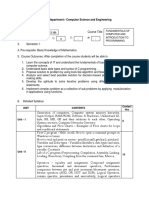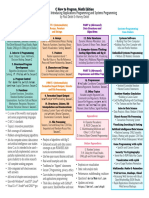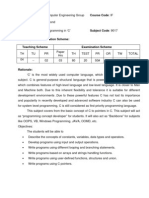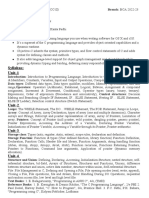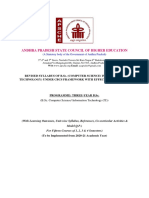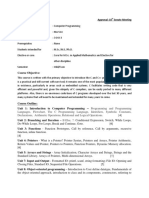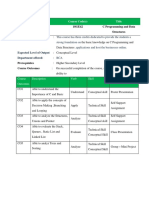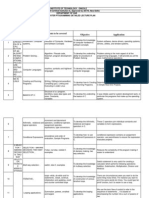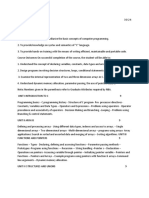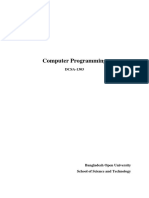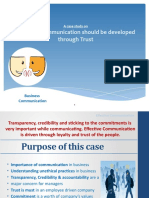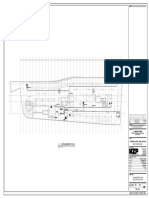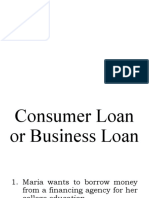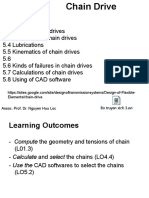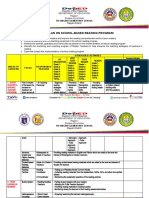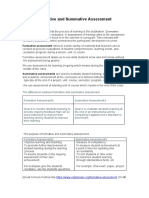0% found this document useful (0 votes)
184 views5 pagesSpicer Adventist University: Department of Computer Science Syllabus BSCC 111 C Programming (3 Credits)
This document provides a syllabus for a 3 credit BSCC 111 C Programming course offered by the Department of Computer Science at Spicer Adventist University. The course aims to develop students' problem solving abilities and skills needed for a career in software development. It will cover fundamental C programming concepts like data types, operators, control structures, functions, pointers, arrays and file handling over 13 chapters taught through lectures and labs. Students will be evaluated through internal and external assessments consisting of assignments, projects, presentations and an end of semester exam.
Uploaded by
vaibhav yadavCopyright
© © All Rights Reserved
We take content rights seriously. If you suspect this is your content, claim it here.
Available Formats
Download as DOC, PDF, TXT or read online on Scribd
0% found this document useful (0 votes)
184 views5 pagesSpicer Adventist University: Department of Computer Science Syllabus BSCC 111 C Programming (3 Credits)
This document provides a syllabus for a 3 credit BSCC 111 C Programming course offered by the Department of Computer Science at Spicer Adventist University. The course aims to develop students' problem solving abilities and skills needed for a career in software development. It will cover fundamental C programming concepts like data types, operators, control structures, functions, pointers, arrays and file handling over 13 chapters taught through lectures and labs. Students will be evaluated through internal and external assessments consisting of assignments, projects, presentations and an end of semester exam.
Uploaded by
vaibhav yadavCopyright
© © All Rights Reserved
We take content rights seriously. If you suspect this is your content, claim it here.
Available Formats
Download as DOC, PDF, TXT or read online on Scribd
/ 5








